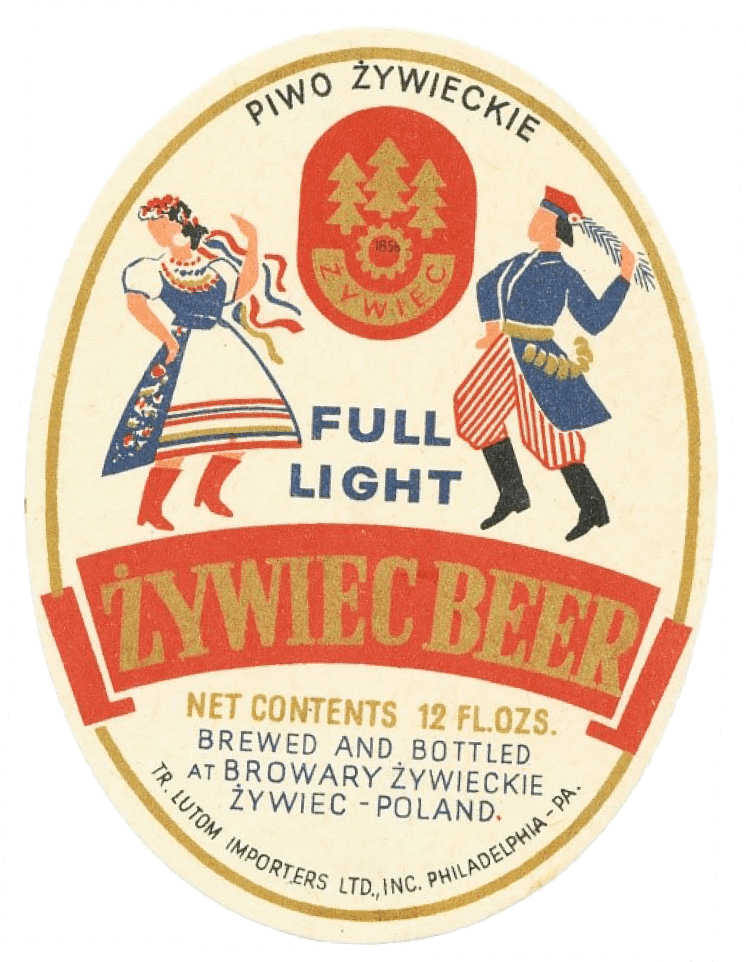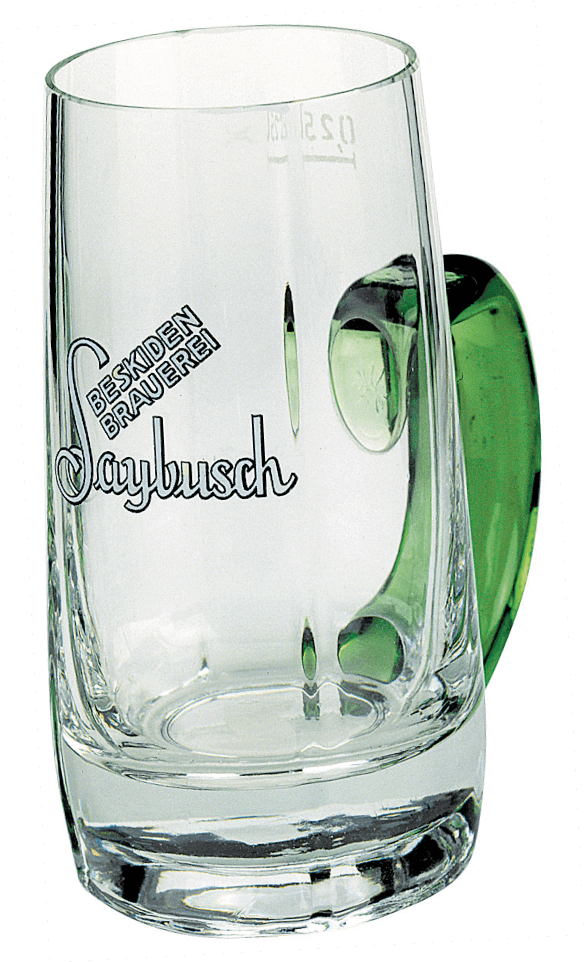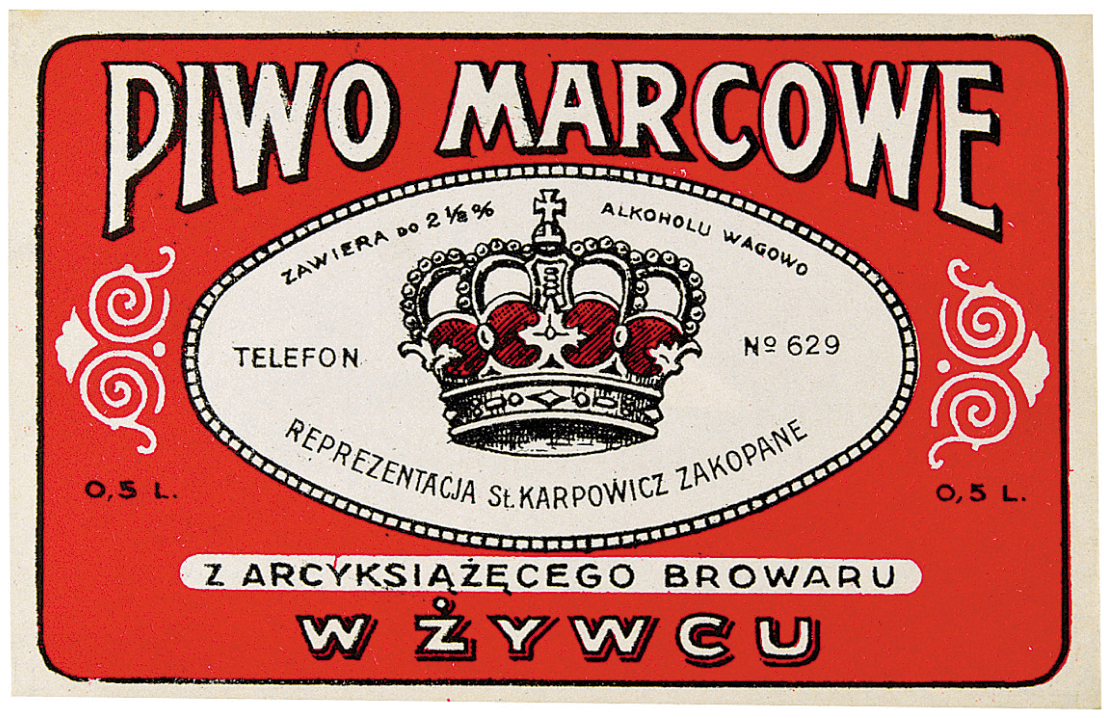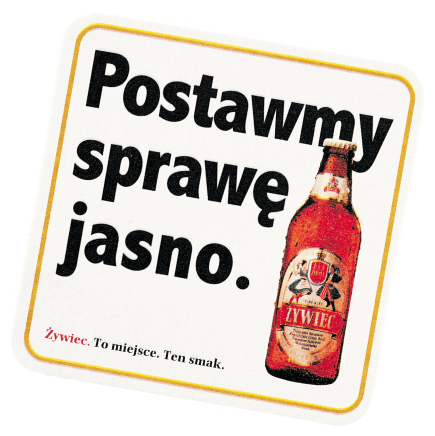
History

The Dancing Couple
In 1956, the brewery began export production of Żywiec Beer, a continuation of the tradition of Zdrój Żywiecki beer. The bottles were graced by an original, oval label showing a dancing couple dressed in the characteristic costumes of a man and woman of Kraków. This dancing couple was rooted both in the pre-war tradition of placing folklore elements on Polish product labels, and in the advertisements of the Archduke Brewery in Żywiec. A dancing couple in highlander costumes appeared for the first time in 1954 on the oval label of Beskidzki Zdrój beer.
Legend has it that the dancing couple in the costumes of Kraków satisfied the expectations of the American importer; the owner of the company was of Polish descent and associated Poland with Kraków.
The label was registered in 1959 in the Patent Office, thus becoming the first trademarked Polish beer label after World War II. The dancing couple, having won the status of an international brand, still adorns the labels or Żywiec beer, recognised around the world.

Three generations
For 93 years, the brewery was the property of the Żywiec Habsburgs. Its founder and first owner was Archduke Albrecht Friedrich Habsburg, grandson of the emperor Leopold II. After Albrecht’s death, his estate along with the brewery passed into the hands of the Archduke Karl Stephan, who ran the brewery for 38 years. In 1933, the majority of the estate, including the brewery and castle, was inherited by his son, Archduke Karl Albrecht.
Karl Albrecht’s son ran the brewery until 1939. When war broke out, considering himself a Pole and being in fact a colonel in the Polish Army, he joined the 2nd Mountain Rifles Regiment of the Border Protection Corps. Due to his service in the Polish Army and refusal to sign the so-called “Volksliste”, a list of German nationals, he was arrested on 9 November 1939. As a result of political changes, the Habsburgs lost their estate in 1945.

Brewery heroes
During the Second World War, the brewery was controlled by German commissars, and received the name of “Beskidenbrauerei Saybusch”. The Germans did not alter the Polish beer recipes, recognising their quality. The did wish, however, to separate themselves from the visual tradition of the brewery, for example by introducing their own Tyrolian logo.
The main type of beer produced during World War II was Saybuscher Quell, similar to the former Zdrój Żywiecki. Another beer, Beskiden-Gold, was produced specifically for the needs of the army and police. Small amounts of porter, ale, export dunkel, and malt beer were also produced.
In the spring of 1945, the German occupiers carried away some of the machinery and equipment of the brewery during their retreat, also destroying part of the brewery archive and mining the cellars. The brewery employees, on seeing the retreating German soldiers, damaged the electrical cables leading to the explosive devices, thus saving the brewery from destruction. Thanks to their dedication, the damage was only slight.

Brewing traditions in the Żywiec area
The history of brewing in the Żywiec area reaches back more than 700 years. In 1327, Żywiec was awarded city status, and both in the city and at the castle several small breweries were in operation. At the turn of the 13th and 14th centuries, artisans from Kraków, Silesia, and the Czech lands came to the city, among them brewers and barrel makers. In the city and its surroundings, a great deal of beer was brewed.
Prince Przemysław, who ruled the Żywiec lands until 1433, grated the townspeople the right to grow barley and produce beer, protecting their rights by establishing the so-called “protected mile”, under the conditions of which it was unlawful to produce beer within a one-mile radius of the city. Until the 19th century, brewing in the Żywiec area developed slowly but steadily.
The breakthrough occurred during the 19th century, in a period of scientific discovery, when small-scale rural and urban breweries were replaced by large, industrial breweries.

What keeps the beer in the bottle?
In the late 19th century, beer began to be bottled on a mass scale, which slowly became the norm. The first bottles were capped with a cork, next with flip-tops (caps held in place by metal wires), and finally with caps as we know them today.
Caps are one of the most eagerly collected items among beer connoisseurs. Thousands of beer buffs today collect caps from different brands and different historical periods. For many years, in the area of the Archduke Brewery in Żywiec, on the last weekend in June an International Beer Collectors Fair is held, where fans trade the mementos they have gathered over the years. Rare items can nearly always be found at the Fair.

Barley, water, hops and … yeast
On 23 April 1516, the Bavarian Duke Wilhelm IV introduced the Reinheitsgebot, the Bavarian Beer Purity Laws, whose aim was to regulate the process of beer production. From that time on, it was only possible to legally produce beer from barley, water, and hops.
It’s worth noting that in these laws, no mention is made at all of yeast – the laws were created so long ago that no one had any idea of the existence of microorganisms, not to mention their role in the production of beer.

Let’s get things straight!!!
During a visit to the Museum, many beer myths, often found on the internet, will be dispelled. For instance, visitors will discover that the notorious beer-belly is in fact a fiction – we gain weight from the snacks we eat while drinking beer. Also, beer is not made from hops, but from malt.
Hops are only a flavouring, and have only been commonly used in beer-making for less than a thousand years (not so long considering that beer-making stretches back at least 6000 years).
The hops added to beer are responsible for approximately 300 identifiable flavours. There are no artificial preservatives in beer because hops have natural preserving properties. Storing beer in metal cans does not have the slightest impact on its taste; the cans are appropriately coated from inside.

Advertising with a big Ż
Żywiec is one of the best-known Polish beers. For years, while respecting its brand traditions, the brand has grown and matured together with its customers, and the advertisements of this brand have always been an intriguing commentary on the reality surrounding them.